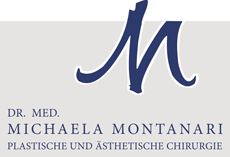Thread lifting (VENUS V-Line, Aptos®, Silhouette®)
Facelift without a scalpel - minimally invasive
Associated terms:
Thread lifting, thread lifting, Venus V-line, PDO threads, Aptos lifting, soft lifting, Happy Lift, Ancorage Lift
Basics of thread lifting
Thread lifts are modern lifting methods that leave no visible scars.
Only small punctures under local anaesthetic are required, through which special threads are inserted under the skin. Using barbs, they fix and tighten the skin from below, thus lifting the sagging skin. At the same time, the stimulation of the connective tissue leads to the formation of new collagen with an additional tightening effect.
Thread lifting can be used to correct facial and neck contours, upper arms and the abdomen. One or more regions can be treated during one procedure.
Brief overview of thread lift:
Duration of treatment:
30-60 minutes
Anaesthesia:
Local anaesthesia, if necessary with twilight sleep
Follow-up treatment:
Cooling
Load restrictions:
1-2 days
Are there different procedures?
There are various names for this relatively new lifting procedure:
"VENUS V-Line PDO threads" The VENUS V-Line Softlifting needles contain biocompatible, fully absorbable sutures made of polydioxanone (PDO), a material that has been used worldwide for decades as a surgical suture material in operations.
"Aptos threads" is what the inventor of this method, Moscow doctor and surgeon Prof. Dr Marlen A. Sulamanidze, called his lifting threads. He derives "Aptos" from the technical term "antiptosis", "ptosis" means sagging, "antiptosis" therefore counteracts sagging. It lifts, it lifts. Aptos and lifting are therefore words with similar meanings.
"Soft Lifting" describes a major advantage of the new procedure: gentle and careful therapy "Thread lifting" indicates that fine special threads are inserted into the skin to lift the skin.
At the Happy Lift and the Aptos Lift degradable (absorbable) sutures can be used, which are effective for approx. 18 months.
With the Aptos Lift, on the other hand, there are also non-degradable threads and a kind of hybrid form (Silhouette Threads Lift) with polypropylene threads (non-degradable) and degradable cones that hook into the subcutaneous tissue. The "lifting effect" lasts for approx. 18-36 months.
What is the procedure for a thread lift?
Treatment with Threads proceeds as follows:
- The doctor marks on the face which areas are to be lifted and how the stitches are to run
- Local anaesthesia
- A fine cannula is guided along the marked line through the lower fatty tissue
- The cannula is hollow inside and the doctor then inserts an Aptos thread
- The cannula is carefully pulled out again, leaving the lifting thread in the tissue
- The doctor pulls first on one and then on the other protruding end of the Aptos thread to create the lifting effect
- The thread ends are cut off and the threads disappear invisibly under the skin
Aftercare
Cooling for 1-2 days, the treated area must not be massaged for about six weeks.
Advantages of thread lifting
- Immediately visible lifting effect
- No incisions, just tiny needle punctures: Practically no scars remain
- No general anaesthetic
- Getting up immediately after treatment: no bed rest, no hospitalisation
- Very rarely pain after the treatment, if it does, relief with the usual painkillers
- Low risk of inflammation
- Fast healing
- Additional effect through the formation of new connective tissue
Risks and side effects
As with any surgical procedure, there are also risks involved in lifting with stitches, although these are very rare:
- More or less severe burning sensation during and after treatment
- Infection and/or reddening of the treated areas
- Incompatibility reaction to the material used
- Uneven or irregular result
- Swelling and bruising after the treatment, but this subsides after a few days
However: If it is really necessary, the stitches can also be removed again.
Whether lifting with stitches is the optimal method in each individual case can only be determined after a careful examination and consultation.




